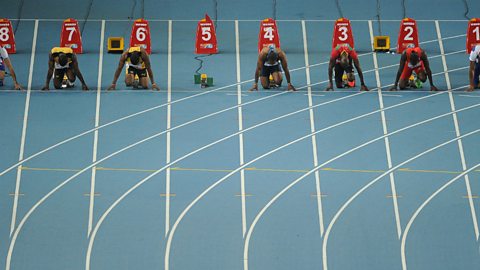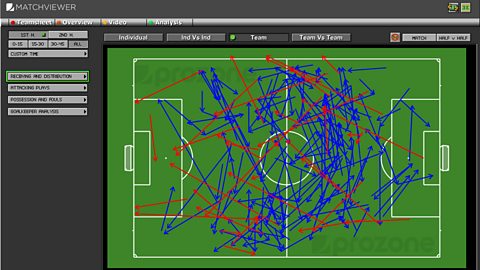Officiating and spectating
Technology plays a key part in how sport is played and watched. Increasingly, it means that officials, spectators and the media are interconnected during performances.
Officials
Technology shapes how officials manage a performance. For example:
- communicating – microphones to consult with other officials on and off the pitch
- decision-making – playback facilities to watch events from different angles
- ball tracking – allows for the ball to be minutely tracked to ensure accuracy of decisions in cricket, tennis and football
- scoring – laser technology to measure jumps and throws more accurately
- time-keeping – shot-clock in basketball to speed up play and keep it exciting
- record-keeping – computers to track points and faults for multiple athletes at once
Spectators
Watching sport no longer means sitting passively at home or in a stadium. Technology has enabled spectators to have a more active part in events. For example:
- camera coverage – remote-controlled and micro-cameras provide more angles, track individual athletes or provide a performer's viewpoint
- statistical information – on individuals, match play and past performances is available on-screen or at the click of a button during play
- interactive software – apps offer access to merchandise, information, competitions, games and voting through links on tickets and programmes or via downloads
- digital media – means that sports fans can follow a wide range of amateur and professional sports in a huge variety of ways
- social media – allows fans to have a personal link with their sporting heroes and share views with others across the world
False starts

In track athletics, if an athlete moves before or within 0.1 seconds of the gun being fired, they have false-started. The race is then stopped and the offending athlete is immediately disqualified. Because this judgement is so critical, at elite events motion sensors are built into the athletes' starting blocks and connected to the starter's gun by a computer. Before 2009, athletes could have one false start before disqualification. This led to gamesmanship and frequent re-starts. The rule was changed to benefit officials, spectators and broadcasters but has seen some controversial disqualifications of 'star' runners.
Technology helps pundits to support their commentary and analysis during and after games, and for performers to review their tactics and their opponents' to work out what they need to do to improve and formulate a strategy.
For example, ProZone is used to analyse most Premier League football matches and Hawk-Eye is used to support officials' decision-making in cricket, tennis and football.
